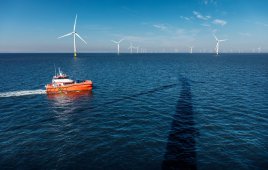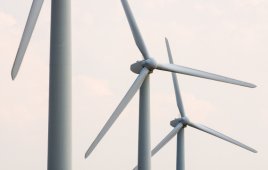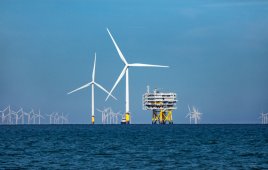If you operate a 1.5 MW wind turbine with an open-loop cooling system, you may have a $20,000 problem – one you’re not even aware of. Water-glycol coolant in the insulated-gate bipolar transducer (IGBT) circuit is a critical issue. Water evaporation elevates the mixture’s viscosity, prohibits cooling ability, and compromises the IGBT and associated electronic controls. All maintenance solutions take the wind turbine and transformer offline, resulting in significant downtime and revenue loss. Combined with the price of replacement parts, this costs thousands.
Parker’s KleenVent Coolant Evaporation Inhibitor (KV-CEI) eliminates water evaporation in the coolant solution and stops the ingress of airborne contaminants by closing the cooling loop. It prevents the need for continuous coolant monitoring during the warm season for a return on investment in a single calendar year.
A few features include:
- Urethane bag to eliminate contamination
- Wide operating temperature range of -40 to 200°F (-40 to 93°C)
- Capacity range of 1 to 5 gallons
- Leak-free design contains liquids and vapors
- Integrated relief valve
- Fluid level gauge for preventative maintenance
KVCEI system benefits for GE 1.5 MW turbines:
• Reduces maintenance schedules (eliminates need to check coolant levels, refill coolant, and/or full system coolant flushes).
• Reduces downtime due to cooling system failures
• Reduced coolant replacement (eliminates need to “top off” coolant levels)
• Prevents the ingression of contamination into the cooling system
• Prevents water evaporation in glycol solution, no need to balance chemistry to maintain concentration for optimized cooling efficiency
• Maintains OEM cooling efficiency and overall system reliability
• Reduces potential catastrophic loss of IGBT’s due to overheating
• Stainless steel reservoir will not corrode when exposed to the environment
To ensure optimal water-glycol ratios
Installed directly in the IGBT’s cooling loop, the KV-CEI keeps water from evaporating off of the water-glycol coolant inside the system. This secures the correct water-glycol ratio and eliminates the need to introduce new water into the system – a step that often results in further concentration errors. When cooled, water vapor returns to its liquid state and naturally remixes at the correct concentration level.
Safe, leak-free construction
Engineered to be leak free for both liquids and vapors, the KV-CEI features an integrated relief valve. It also provides a fluid level gauge to allow quick fluid level checks and integrate with preventative maintenance schedules. Internally, the inhibitor’s design incorporates a durable urethane bag that keeps vapor and fluid level changes in check during standard system cycles. It also blocks contamination from entering coolant circuit. Parker experts work with you to design mounting brackets tailored to your application for fast, easy installation.
This cost-saving coolant isolator technology is based on Parker’s KleenVent KVE Series of hydraulic reservoir isolators. The innovative KleenVent design has been used in a wide variety of power units made by leading manufacturers to isolate hydraulic fluid from atmospheric contamination. In fact, in units with KleenVent isolators, Parker has witnessed up to 20 years of hydraulic fluid life.
Filed Under: News, O&M




